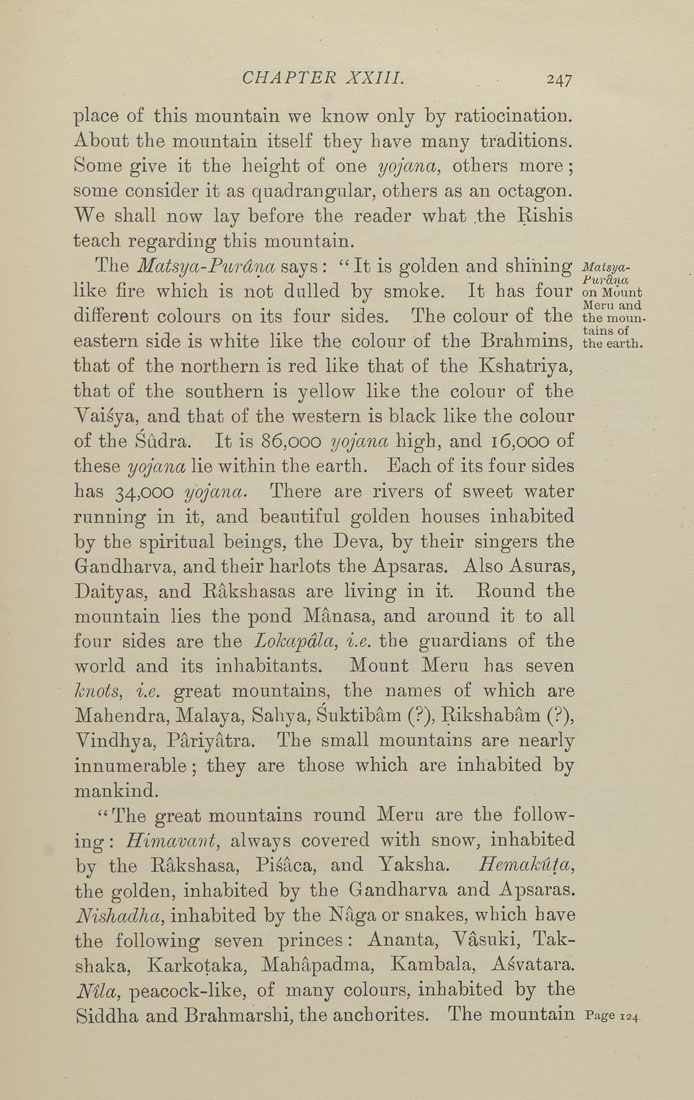CHAPTER XXIII. 247
place of this mountain we know only by ratiocination.
About the mountain itself they have many traditions.
Some give it the height of one yojana, others more;
some consider it as quadrangular, others as an octagon.
We shall now lay before the reader what .the Rishis
teach regarding this mountain.
The Matsya-Bu^rdna says : " It is golden and shining Matsya-
like fire which is not dulled by smoke. It has four onM6unt
different colours on its four sides. The colour of the the moun-
eastern side is white like the colour of the Brahmins, the earth.
that of the northern is red like that of the Kshatriya,
that of the southern is yellow like the colour of the
Vaisya, and that of the western is black like the colour
of the Sudra. It is 86,000 yojana high, and 16,000 of
these yojana lie within the earth. Each of its four sides
has 34,000 yojana. There are rivers of sweet water
running in it, and beautiful golden houses inhabited
by the spiritual beings, the Deva, by their singers the
Gandharva, and their harlots the Apsaras. Also Asuras,
Daityas, and Rakshasas are living in it. Round the
mountain lies the pond Manasa, and around it to all
four sides are the Lokapdla, i.e. the guardians of the
world and its inhabitants. Mount Meru has seven
knots, i.e. great mountains, the names of which are
Mahendra, Malaya, Sahya, Suktibam (?), Rikshabam (?),
Vindhya, Pariyatra. The small mountains are nearly
innumerable; they are those which are inhabited by
mankind.
"The great mountains round Meru are the follow¬
ing : Himava'nt, always covered with snow, inhabited
by the Rakshasa, Pisaca, and Yaksha. HemakUta,
the golden, inhabited by the Gandharva and Apsaras,
Nishadha, inhabited by the Naga or snakes, which have
the following seven princes: Ananta, Vasuki, Tak¬
shaka, Karkotaka, Mahapadma, Kambala, Asvatara.
Nila, peacock-like, of many colours, inhabited by the
Siddha and Brahmarshi, the anchorites. The mountain Page 124
|








